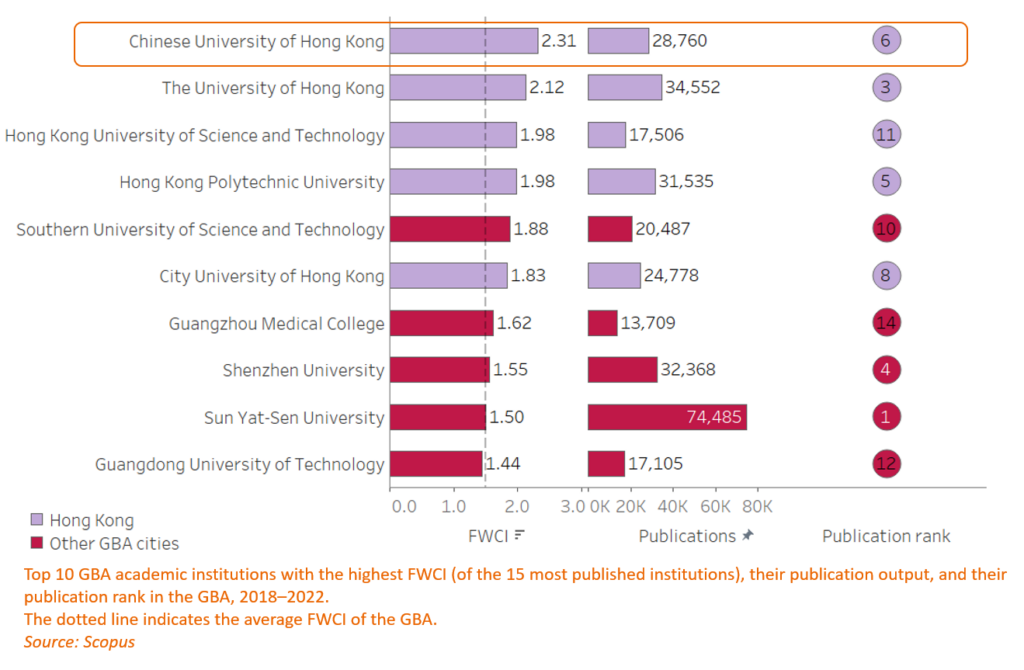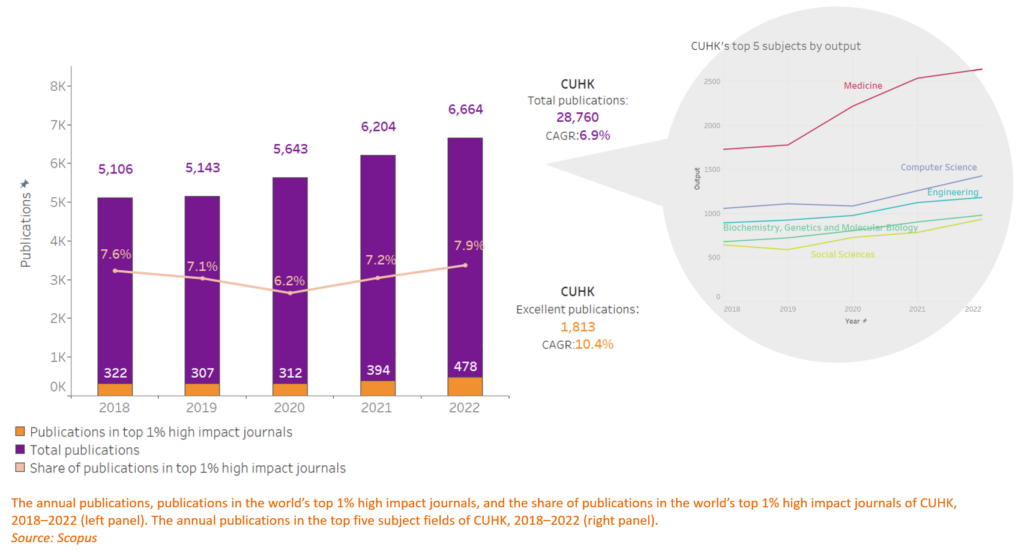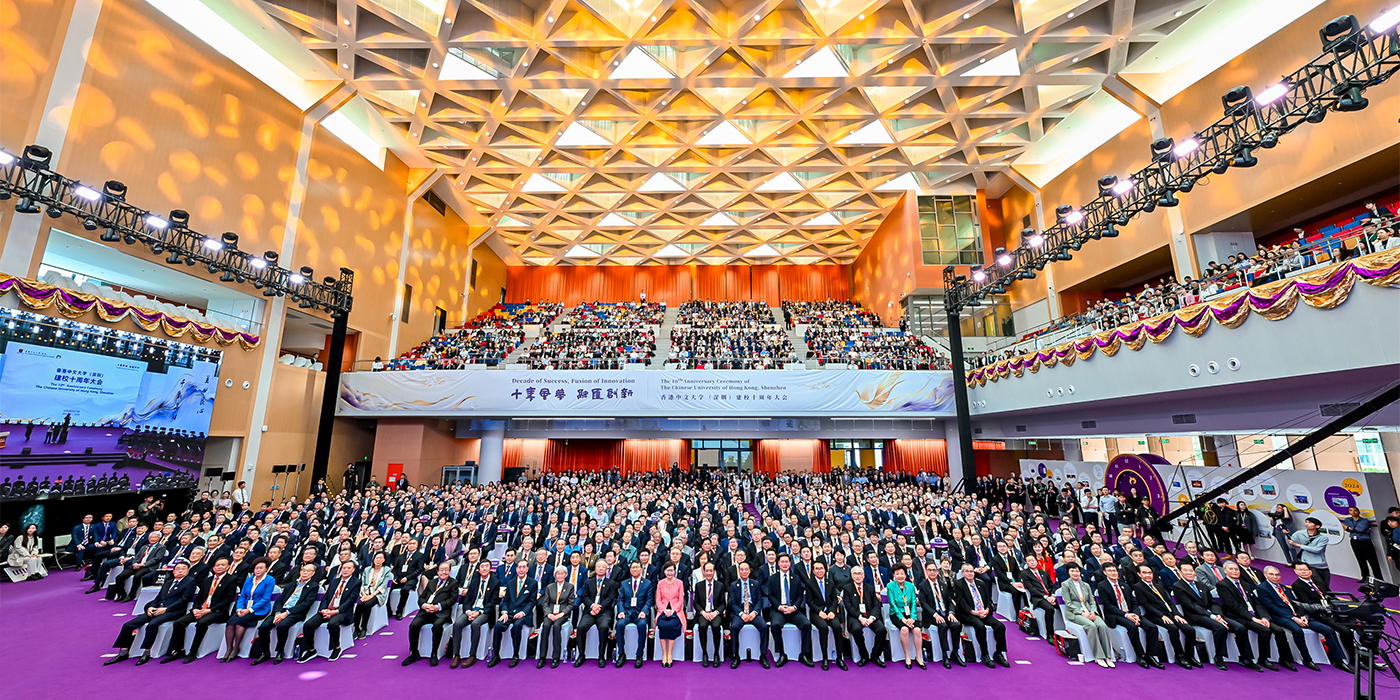Scientific research is the engine that drives innovation and progress. A landmark new report from The Chinese University of Hong Kong (CUHK) and leading analytics firm Elsevier reveals that the Guangdong-Hong Kong-Macao Greater Bay Area (GBA) – has recorded a meteoric rise in research. CUHK has recorded impressive performance, in addition to increasing its research output, it also ranks first among universities in the GBA in terms of field-weighted citation impact (FWCI).
The analysis finds that from 2018 to 2022, its research output surged at an extraordinary 17.9% compound annual growth rate. The region is now home to over 420,000 active researchers – nearly doubling in just five years – who push the boundaries in critical fields like engineering, medicine, computer science, materials science, biochemistry, physics and chemistry.
CUHK stands out as a powerhouse within the GBA’s thriving research ecosystem, accounting for 5.3% and 5.8% of the region’s biomedical and AI research output respectively. Notably, CUHK boasts the highest overall FWCI – a key measure of research impact, based on the average number of citations of research in a field – among the top publishing institutions in the region, surpassing even leading government research organisations and corporate research institutes.


The report also shines a light on the GBA’s collaborative prowess. 30.2% of the region’s research collaborations involve international partners, while for CUHK, this figure rises to an impressive 42.9%; nearly 40% of CUHK’s research output is co-authored with other GBA institutions. This indicates CUHK’s strength in research collaboration and underscores the University’s role as a bridge between the mainland and the world.
According to CUHK’s Pro-Vice-Chancellor (Research) Professor Sham Mai-har, this report “demonstrates the GBA’s phenomenal growth as a research and development powerhouse” and serves as a “powerful reminder that a strong research sector will be essential” as the region aims to become a global innovation hub.
Ms Lynn Li, President of Elsevier (Greater China), emphasised that it aimed to showcase the impressive research impact of the GBA and support the scientific community in the region on their path of research and innovation, in order to enable technological advancements that better serve society as a whole.
The report was launched at a special CUHK event in Shenzhen, focusing on the GBA’s research impact and CUHK’s contributions. The event included a keynote address from Huawei on industry-academia collaboration, as well as a panel discussion with Shenzhen government officials and a CUHK startup. There was also a media tour to the Entrepreneurship & Innovation Hub at CUHK Shenzhen Research Institute, showcasing promising startups focusing on advancements in areas like crop improvement, medical robotics and blockchain technology.
Read the full CUHK-Elsevier report here.









